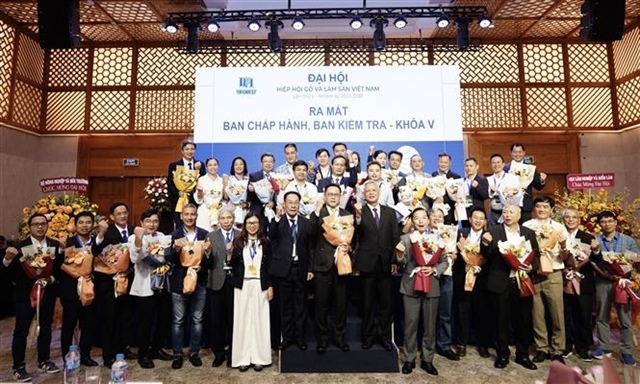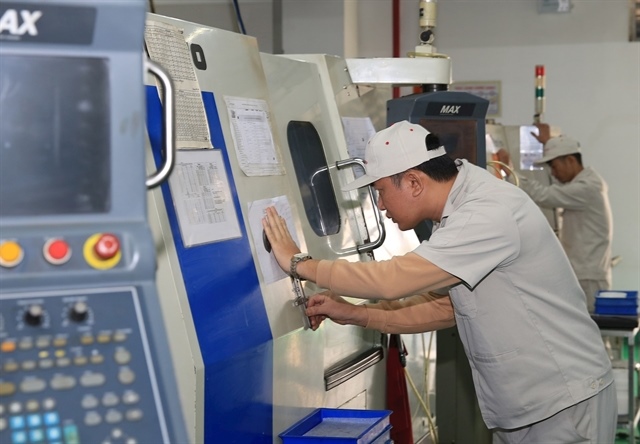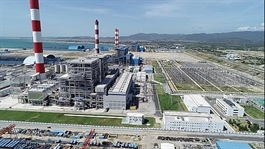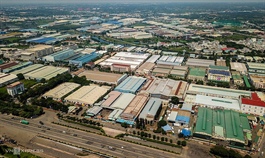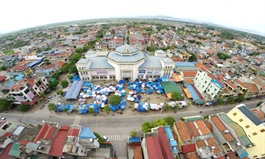Stretched to the limit, Vietnam farmers chop down rubber trees
Stretched to the limit, Vietnam farmers chop down rubber trees
After weathering repeated storms, central Vietnam latex farmers have lost out to market turbulence, and are chopping down their rubber trees.
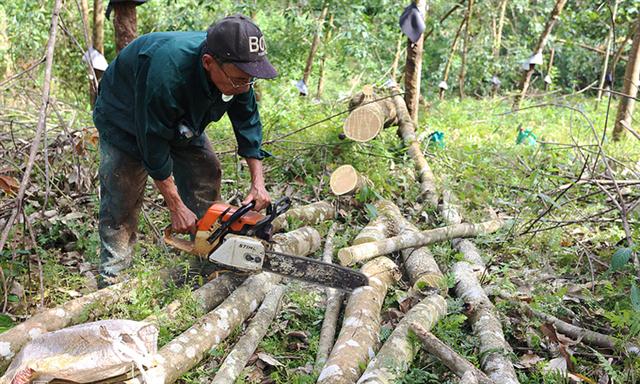
A farmer in Hiep Duc District, Quang Nam Province, chops down his rubber trees to sell the logs. Photo by VnExpress/Dac Thanh.
|
Pham Thi Xuyen, a resident of Song Tra Commune in Quang Nam province’s Hiep Duc District, has been hiring people to chop down rubber trees, all over 10 years old, at her two-hectare (five-acre) farm.
It costs VND60,000 ($2.60) to cut down each tree, which is higher than the VND40,000 for each seeding, but Xuyen has decided she has no choice.
"After removing all the rubber trees, we might switch to cultivating wattle (also known as acacia) as this timber tree has lower investment costs and after five years, we can sell the timber at a higher price than latex," she said.
Many other rubber farmers in the district are also cutting down the trees, saying latest farming has become untenable in increasingly extreme weather, with intense storms and cyclones in the central region, and that even if they succeed in protecting their farms from repeated storms, latex prices are not enough for them to break even.
Quang Nam is home to more than 10,000 ha (24,700 acres) of rubber plantations grown individually and by corporates.
Rubber tree cultivation took off in the late nineties, with high hopes that locals, not just corporates, can earn high incomes from the venture.
For many years, local authorities handed over vacant land plots and barren hills totalling over 50,000 hectares to rubber growing businesses.
Accordingly, many households got into the business, following private firms, with each family growing rubber on several hectares.
In 2007, Xuyen invested almost VND100 million ($4,336) into cultivating two hectares of rubber. At that time, she understood that it would take five-seven years for the rubber trees to produce the latex, and that one hectare of rubber could yield two tons of latex and generate revenues of over VND200 million per year.
Six years later, when her trees had matured for producing latex, the entire plantation was destroyed by Storm Wutip.
Undeterred, she continued investing in the business. In 2018, her rubber trees were again ready to produce latex, though that year, the prices had fallen sharply, forcing Xuyen to postpone the harvest.
While she was still waiting for the right moment to harvest the latex for sale, storm Molvave approached central Vietnam last October as one of the most powerful ever to hit the country. It damaged more than one hectare of her farm.
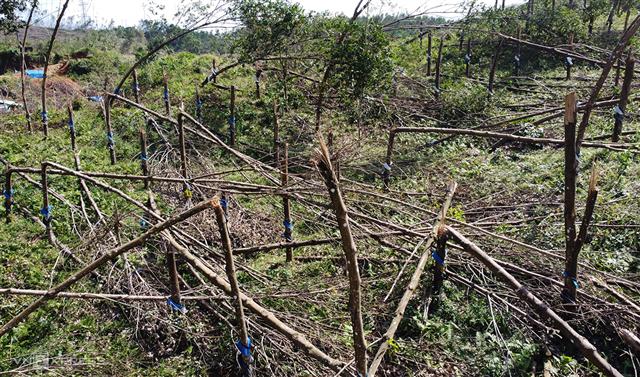
A rubber field in Hiep Duc District, Quang Nam Province, is damaged by Storm Molave, October 2020. Photo by VnExpress/Dac Thanh.
|
Nguyen Nhu Cong, chairman of Hiep Duc, said the district is home to 5,700 hectares of rubber plantations, of which more than 1,600 was destroyed by Molvave.
"We would like the provincial administration to come up with other plans that are more suitable to local weather conditions. Rubber has proven to be a low-efficiency, high-risk crop," he said, suggesting that high-tech agriculture, large-scale cattle husbandry and timber plantations may be better options.
Le Minh Hung, deputy director of the Quang Nam Department of Agriculture and Development, said the province had originally planned to have 50,000 hectares of rubber. It has 14,000 hectares now.
"In the 2010-2012 period, one ton of latex fetched more than VND100 million, but after that, the market price kept falling."
Given its low value and durability, the province has decided to limit the rubber plantation area to less than 15,000 hectares, he said.
In 2009, after seeing many neighbors around joining the rubber business, Dong Huu Sang of Phong My Commune, Phong Dien District, Thua Thien-Hue Province, decided to step in with three hectares.
By 2018, he was earning VND1 million per day, which was enough to take care of his family and pay off the bank loan.
"But in the past two years, the price of latex has dropped significantly from VND50,000 per kilo to less than VND10,000 per kilo. Then last September, a storm came and damaged a significant number of trees, leaving me with no choice but to cut the rubber trunks into logs for sale."
Sang said he plans to cultivate orange, grapefruit or wattle on his farm instead of rubber.
Similar tales of woe
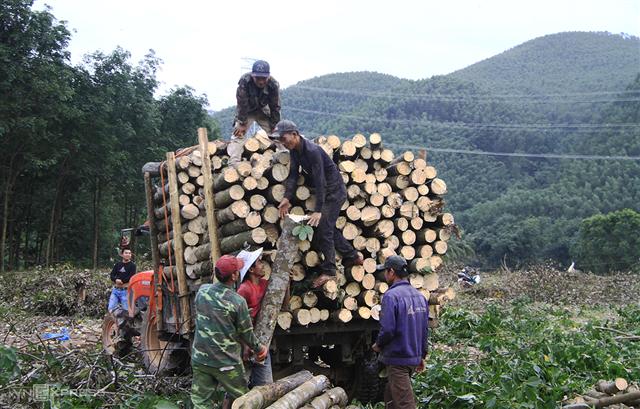
Farmers in Phong Dien District, Thua Thien Hue Province, collect logs of rubber trees they have chopped down for sale. Photo by VnExpress/Vo Thanh.
|
Ho Vang, deputy director of the Thua Thien Hue agriculture department, said the province used to have more than 10,000 hectares of rubber trees, but a string of storms during last year had destroyed 2,500 hectares.
Between mid-September and November last year, the central region was hit by as many as nine storms and two tropical depressions, causing a total economic loss of VND30 trillion.
"Now, with the latex price dropping, we expect that the rubber plantation area will keep shrinking, but we will not encourage local farmers to resume production because it no longer has the high economic efficiency it used to."
In Ha Tinh, the Vietnam Rubber Industry Corporation was allocated more than 25,000 hectares of land to grow rubber.
Of this, the Ha Tinh Rubber Co. Ltd was given 10,000 hectares and Huong Khe Rubber Co. Ltd got the rest.
Until now, Ha Tinh Rubber has returned more than 2,000 hectares of land to local authorities for other agricultural projects and on the the remaining 8,000 hectares, just 3,000 are used to grow rubber. The rest are dedicated to growing other trees.
Meanwhile, Huong Khe has used just 4,000 hectares for rubber and is expected to return 3,000 hectares to local authorities.
The two companies say they do not have any plan to extend the cultivation area, given the low latex prices.
Several local reports have blamed the low latex prices on falling global demand in major consumer countries. Some have said that domestic prices may rise in the near future, but for many rubber farmers in central Vietnam, it would be too little, too late.


